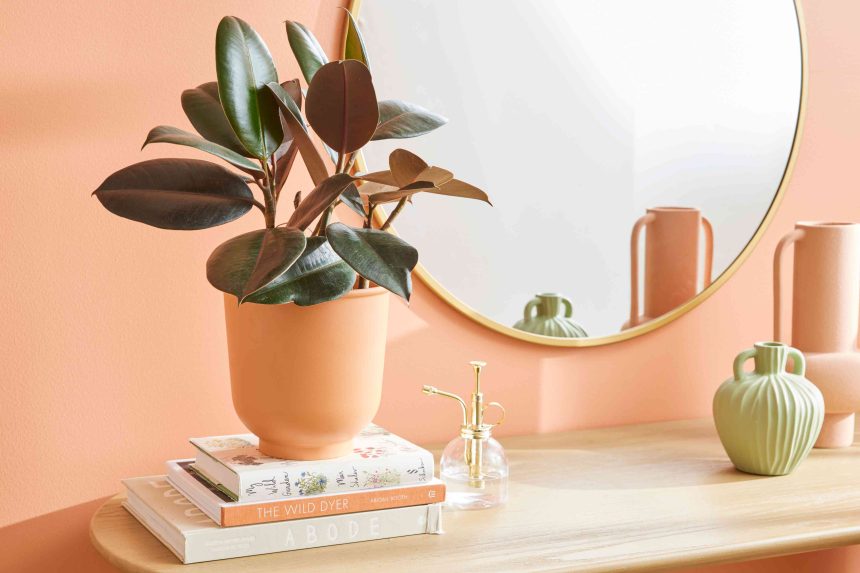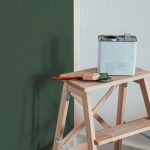Rubber plants are known for growing quickly and being low maintenance, but even these easygoing tropicals can experience common houseplant problems. Brown leaves on a rubber plant are a sign that there’s a problem with your plant’s care or environmental conditions.
Here are 5 reasons your rubber tree’s leaves could be turning brown at the edges, plus recommended tips for how to remedy the issue.
Overwatering
Overwatering can cause your rubber plant to develop dull brown patches that appear on leaf edges. The plant’s soil should be kept evenly moist, neither too wet nor too dry.
Check your rubber plant’s soil moisture. If it’s very soggy, cut back on watering. Wait until the soil surface has begun to dry out before watering again, but avoid letting the soil dry out completely.
Your plant will require less frequent watering in winter, so monitor soil moisture closely during this time.
Poor Drainage
Brown leaf edges on your rubber plant can also be due to improper drainage, which creates overly moist soil. Using a potting mix that doesn’t drain quickly, potting your plant in a container with no holes, or failing to empty cache pots or saucers after watering can all cause poor drainage.
The best soil for a rubber plant will contain plenty of perlite and chunky orchid bark to promote fast drainage. Use a pot with several holes in the bottom to allow water to flow out completely, and always empty cache pots or saucers after watering so plant roots aren’t sitting in water.
Lack of Light
Insufficient light could exacerbate moisture issues that can cause brown leaf edges on your rubber plant. The more light a plant gets, the more water it requires to grow. A lack of light means that what seems like a reasonable amount water could result in overwatering.
Rubber plants grow best with several hours of bright, indirect light per day, such as several feet from a large south-facing or west-facing window. They can also benefit from direct morning sunlight, such as from an east-facing window. Check soil moisture regularly to know when it’s time to water.
Underwatering
If you’ve neglected to water your rubber tree for a while, overly dry soil could cause leaves to turn brown and dry and eventually drop off. This typically begins with older leaves lower on the stem.
Rubber plants require consistent moisture to thrive. If your plant’s potting mix has completely dried out, give it a long bottom watering to rehydrate the root ball.
Going forward, water your plant regularly. A good sign that it’s time to water is that the soil surface has just begun to dry out.
Temperature Shock
A sudden change in conditions can cause your rubber plant’s leaves to turn brown and fall off. If moisture issues or light conditions aren’t the culprit, consider whether your plant has been exposed to cold drafts or sudden changes in temperature recently.
Rubber plants prefer temperatures between 65°F and 85°F. You can’t reverse the effects of temperature shock once it’s happened, but you can relocate your plant to a spot that’s far from drafty windows, doors, and air conditioning events to prevent this issue in the future.
FAQ
-
Yes. Remove dead or damaged leaves from your plant as they appear. Always use sharp, sterilized pruners or scissors and clean them after use to avoid spreading plant diseases to the rest of your collection.
-
A healthy, thriving rubber plant will have large, glossy, unblemished leaves and can grow quite rapidly—up to 24 inches in a single year.
-
It’s not necessary to mist a rubber plant, as misting doesn’t actually increase humidity and rubber plants can easily adapt to average indoor humidity levels in temperate climates. However, it’s a good idea to wipe the leaves occasionally with a clean, damp cloth to remove dust and restore their shine.





